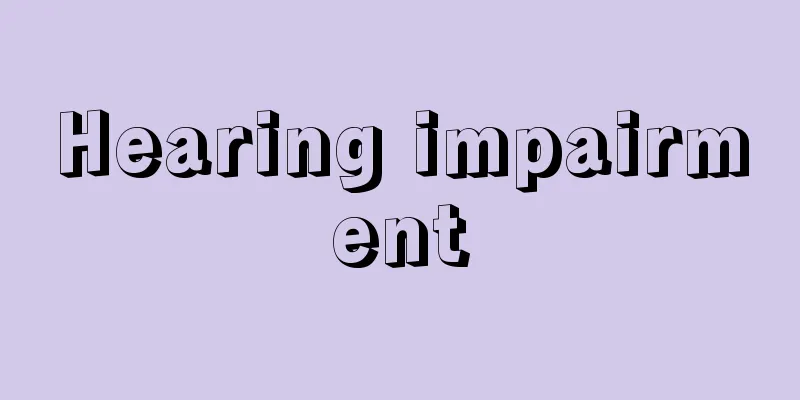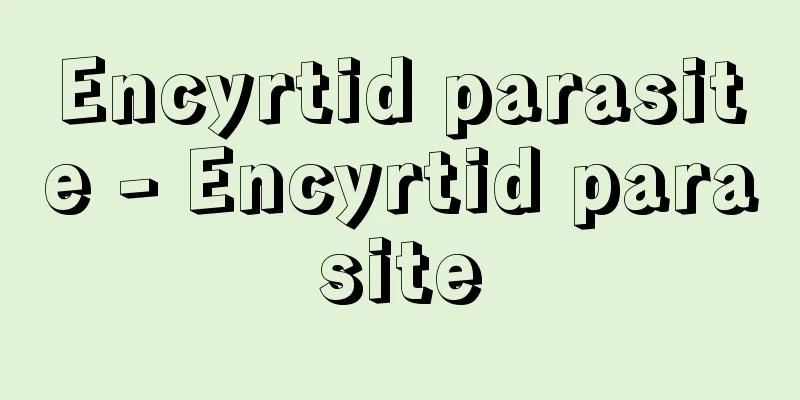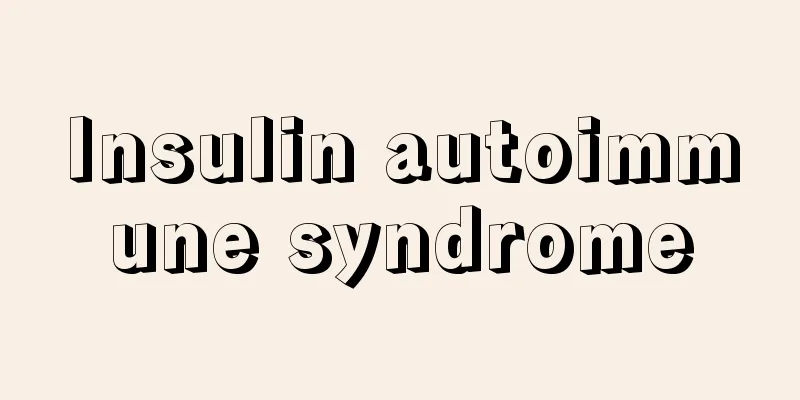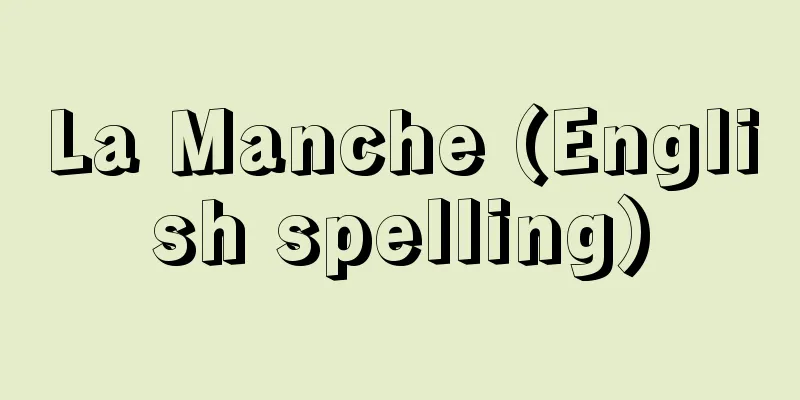Hearing impairment

Structure of the ear: outer and middle earTo help you understand hearing loss, we will first explain how we hear. As shown in Figure 1, the ears are The external auditory canal is what we call the "ear hole," and the distance from its entrance to the eardrum is about 3.5 cm in adults, but is shorter in children, reaching almost the adult length at around 10 to 15 years of age. Also, since the external auditory canal curves downward and forward from the middle to the outside, it is easier to observe the depths if you pull the pinna slightly upward and backward to straighten the external auditory canal. The eardrum is a very thin membrane less than 0.1 mm thick and has an oval shape with a diameter of about 8 mm. The middle ear, located inside the eardrum, forms a thin tube called the Eustachian tube at its front end, which connects to the back of the nose. The Eustachian tube has the function of draining fluids accumulated in the middle ear, and also opens momentarily when you yawn or swallow to adjust the pressure in the middle ear to atmospheric pressure. When your ears are blocked on an airplane or on a high mountain, swallowing or yawning can help relieve the pain because the Eustachian tube opens and adjusts the pressure in the middle ear. For an average adult, it takes about 3 to 4 swallows to do this. Children's Eustachian tubes are slightly shorter than adults', run nearly horizontally, and are soft and immature. For this reason, when a child has a cold and develops rhinitis or pharyngitis, bacteria can enter the middle ear from the nasopharynx through the Eustachian tube, making them more susceptible to developing otitis media. Also, because of the softness of the tube, the Eustachian tube does not open properly even when swallowing, and the middle ear pressure cannot be balanced when the plane descends, causing severe ear pain. The inner ear and how hearing works The inner ear is located in the deep bone about 5 cm from the ear opening. As its name suggests, the cochlea is snail-shaped, and the base part of the cochlea is sensitive to higher sounds, while the higher it is, the lower the sounds it senses. The hair cells in the cochlea sense sound, but once damaged and killed, they never regenerate. In addition, even if you are not suffering from any particular illness, hair cells gradually fall out as you age from the base of the cochlea, the part that senses high-pitched sounds. This is why anyone can lose their hearing as they get older. Sound is collected by the pinna, enters the ear canal, and vibrates the eardrum. The vibration of the eardrum is transmitted to the inner ear via three ossicles, where the vibration is converted into an electrical signal in the hair cells of the inner ear. The sound signal is then transmitted to the hearing nerve and then to the brain. Any disease along this pathway can cause hearing loss. Various tests are carried out When examining a patient with hearing loss, we first directly observe the outer ear and eardrum. For example, However, abnormalities in the deep parts of the middle ear or in the ossicles cannot be observed directly. In these cases, imaging tests such as CT scans are performed in addition to hearing tests. Furthermore, when it comes to the inner ear, a comprehensive picture can be obtained using CT or MRI scans, but structures such as hair cells are too small to be seen even in images. Therefore, functional tests such as hearing tests are extremely important in the treatment of hearing loss. Hearing has many different aspects beyond simply being able to detect the presence or absence of sound.Therefore, there are many types of tests, including not only pure-tone audiometry, which tests the hearing of simple beep-beep sounds (pure tones), but also speech audiometry, which examines speech discrimination, tests that measure the ability to discriminate changes in loudness, and tests that look at reactions to sustained sounds. In addition, tympanometry is used to check the condition of the eardrum, and the acoustic reflex test is used to check the response to sound. Recently, newborn hearing screening tests using auditory brainstem response and otoacoustic emission tests have become more common in order to detect and treat hearing loss early. For small children, special testing methods that incorporate sound reflexes and play are also required. As mentioned above, various hearing tests are performed to diagnose and treat hearing loss. For details on each test, please refer to the explanation of the disease in this book. Yasushi Naito "> Figure 1. Structure of the ear Source: Houken “Sixth Edition Family Medicine Encyclopedia” Information about the Sixth Edition Family Medicine Encyclopedia |
耳の構造外耳と中耳難聴について理解していただくために、まず、「聞こえ」の仕組みについて説明します。 耳は図1のように、① 外耳道はいわゆる「耳の穴」で、その入口から鼓膜までの距離は大人で約3.5㎝ですが、子どもではそれより短く、10~15歳ころにほぼ成人の長さになります。また、外耳道は、なかほどから外が前下方へカーブしているので、耳介を少し後上へ引っ張って、外耳道がまっすぐになるようにすると奥まで観察しやすくなります。 鼓膜は厚さ0.1㎜以下の非常に薄い膜で、直径8㎜くらいの楕円形をしています。 鼓膜の内側の中耳は、前端が耳管という細い管になって、鼻の奥の突き当たり、 耳管は、中耳にたまった液体を排出するはたらきと、あくびや物を飲み込む時に一瞬開いて中耳の圧力を大気圧に調整するはたらきがあります。飛行機や高い山などで耳が詰まった時に、唾を飲んだり、あくびをすると楽になるのは、耳管が開いて中耳圧が調整されるからです。普通の大人なら、3~4回の 子どもの耳管は大人より少し短く、水平に近い走行で、軟らかく未成熟です。このため子どもでは、かぜで鼻炎や咽頭炎を起こすと、細菌が上咽頭から耳管を通って中耳に侵入し、中耳炎を起こしやすくなります。また、軟らかさのためにかえって物を飲み込んでも耳管がうまく開かず、飛行機の降下時に中耳圧が平衡できずに強い耳痛を起こしたりします。 内耳と聞こえの仕組み 内耳は、耳の入口から約5㎝の深い骨のなかにあり、 蝸牛は名前のとおり、かたつむりの形をしており、巻き始めの基底部分が高い音、回転が進んだ上の部分になるほど低い音を感じるようになっています。 蝸牛のなかで音を感じているのは、有毛細胞という毛の生えた特殊な細胞ですが、この細胞は、傷害されていったん死んでしまうと二度と再生しません。内耳性の難聴が治りにくいのは、このような有毛細胞の また、有毛細胞は、とくに病気をしなくても年齢とともに蝸牛の基底部分、つまり高い音を感じる部分から次第に脱落していきます。高齢になると、誰でも耳が聞こえにくくなるのはこのためです。 音は耳介で集められて外耳道に入り、鼓膜を振動させます。鼓膜の振動は3つの耳小骨をへて内耳に伝えられ、内耳の有毛細胞で振動が細胞内の電気的信号に変換されます。音の信号は、ここで聞こえの神経に伝達され、さらに脳へと送られます。 この経路のなかのどこが病気になっても、難聴の原因となります。 さまざまな検査が行われる 難聴の患者さんの診察では、まず外耳から鼓膜までを直接観察します。たとえば しかし、中耳の深い部分や耳小骨の異常は、直接観察できません。この場合は、聴力検査に加えてCTなどの画像検査を行います。 さらに、内耳になると、全体像はCTやMRI検査でわかりますが、有毛細胞などの構造は小さすぎて画像でも見ることができません。 したがって、難聴の診療では聴力検査などの機能検査が非常に大切です。 聴覚には、単に音の有無がわかるだけでなく、さまざまな側面があります。したがってその検査にも、ピーッピーッという単純な音(純音)の聞こえを検査する純音聴力検査だけでなく、語音の弁別を調べる語音聴力検査、音の大きさの変化の弁別能を測る検査、持続する音に対する反応をみる検査など、多くの種類の検査があります。 さらに、鼓膜の状態を検査するティンパノメトリー、音への反射をみるアブミ骨筋反射検査、 最近は、難聴の早期発見、早期治療を目指して聴性脳幹反応や耳音響放射検査を用いた新生児聴覚スクリーニング検査も行われることが多くなってきました。また、小さな子どもでは、音に対する反射や、遊びなどを取り入れた特別な検査法が必要になります。 このように、難聴の診断と治療のために、いろいろな聴覚検査が行われます。それぞれの詳しい内容については、本書の病気の解説を参照してください。 内藤 泰 "> 図1 耳の構造 出典 法研「六訂版 家庭医学大全科」六訂版 家庭医学大全科について 情報 |
<<: Southern Dynasties Tombs - Nancho Ryobo (English spelling)
Recommend
Matsutaro Kawaguchi
Novelist, playwright, and director. Born on Octob...
Cabinet approval - kakugiryokai
Normally, it is a matter that can be decided by th...
Zistersdorf
...The Wachau Valley is also known for its high-q...
Pyridoxal phosphate
...In the carboxybiotin-enzyme intermediate, the ...
Mawlay Ismail
…In 66, Moulay al-Rasid conquered Fes and made it...
Matters concerning the Korean Military Police
…The Military Police Ordinance was formally enact...
Urogenee - Urogenee
…The Romanov dynasty was established in 1613, and...
Patch test
This is an important method for determining the c...
Drama music - gikyokuongaku (English)
One of the five major genres of Chinese music (fol...
Blancmange
〘 noun 〙 (from blancmanger) A confectionery made b...
Wittewael, J.
...However, this was only in Rome; in Florence, s...
Relic soil
...However, not all buried soils are paleosols, a...
Desai, A.
...New Zealand has M. Mahey who writes refreshing...
Furer-Haimendorf, C.von (English spelling) FurerHaimendorfCvon
...According to research by linguists from the So...
NBC - NBC
National Broadcasting Company is an abbreviation ...









